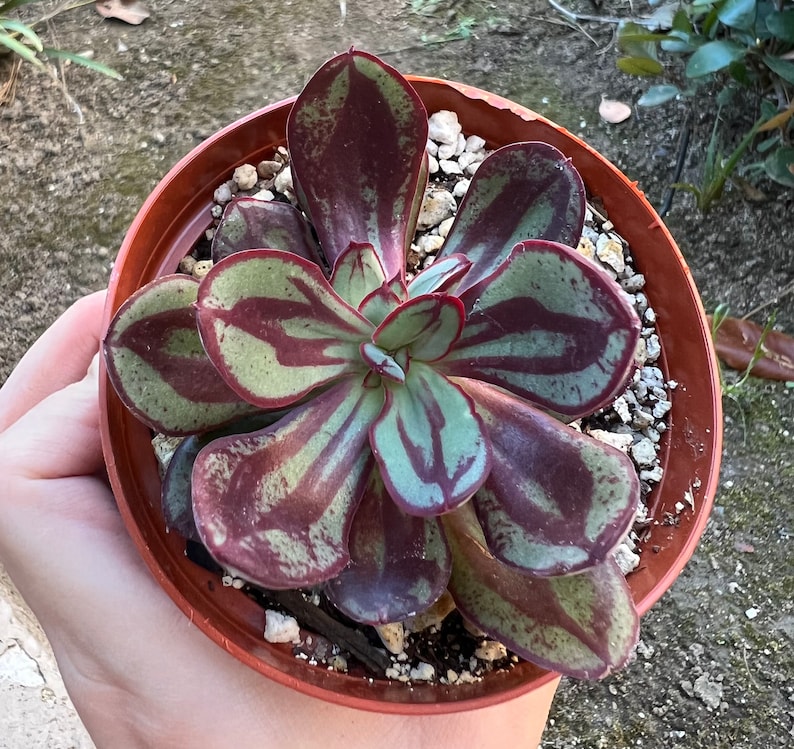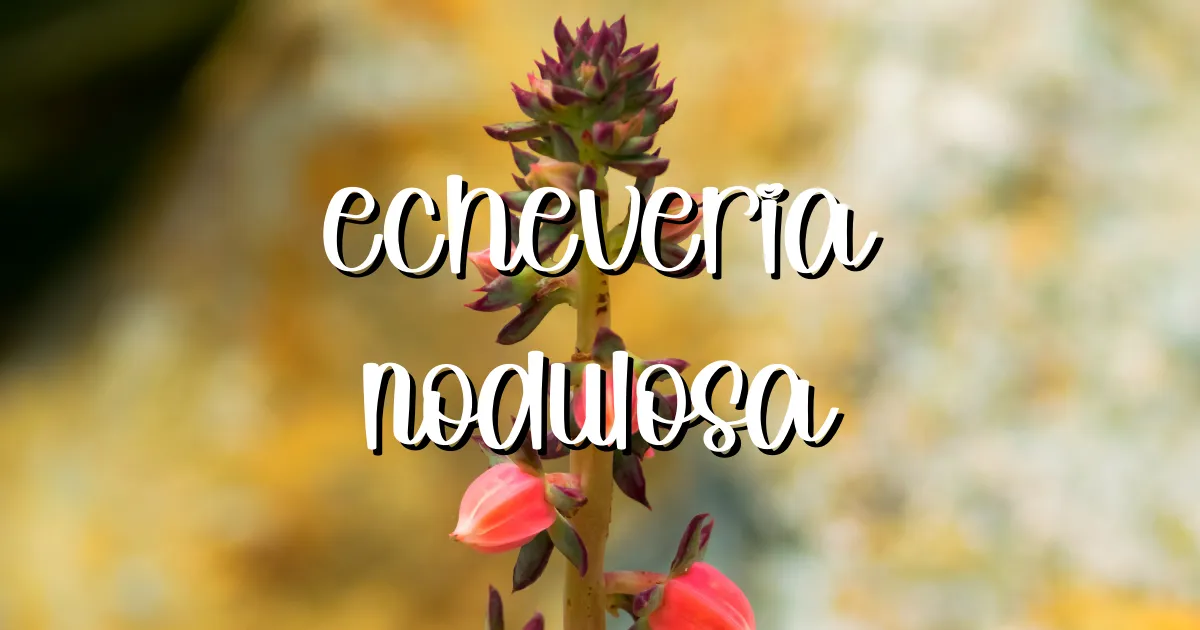With its colorful painted leaves, Echeveria nodulosa ‘Painted Echeveria’ is an eye-catching succulent. This guide covers everything you need to know to grow this popular echeveria successfully both indoors and outdoors.
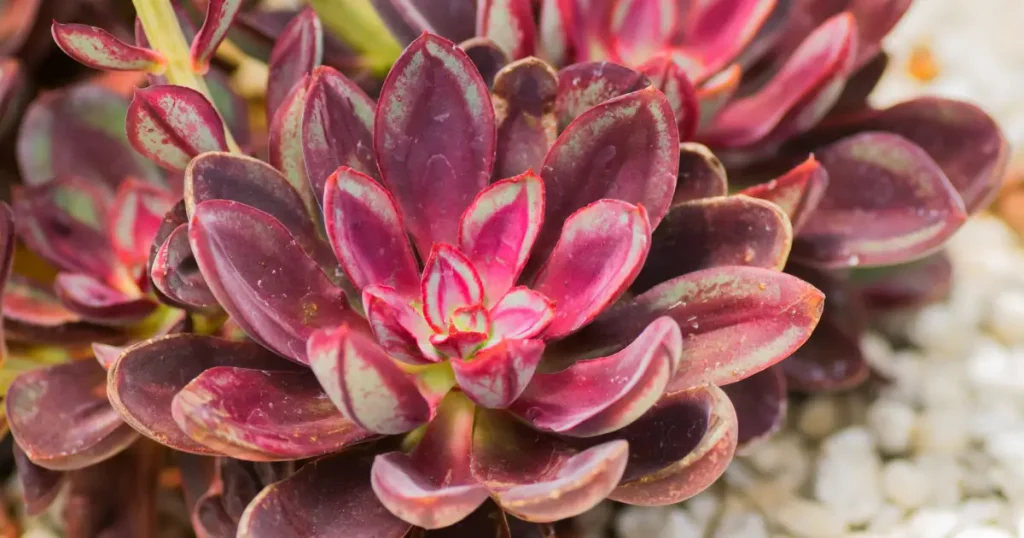
Dig in!
Introduction
Natural Habitat
Echeveria nodulosa is native to the arid regions of Mexico where it grows on rocky hillsides and outcrops. The ‘Painted Echeveria’ cultivar was developed in cultivation.
Common Names
Other common names include Mexican firecracker, painted Mexican echeveria, and Mexican painted echeveria.
Unique Adaptations
Echeveria nodulosa ‘Painted Echeveria’ has adaptations to conserve water in dry environments:
- Thick, waxy leaves to store water and prevent evaporation
- Compact rosette shape to minimize sun exposure
- Hair-like cilia reflect sunlight and protect leaf surfaces
Differentiation
The vividly colored foliage distinguishes ‘Painted Echeveria’. The leaves display a mix of green, red, purple, orange, yellow, and pink – much more intense than the Echeveria nodulosa species.
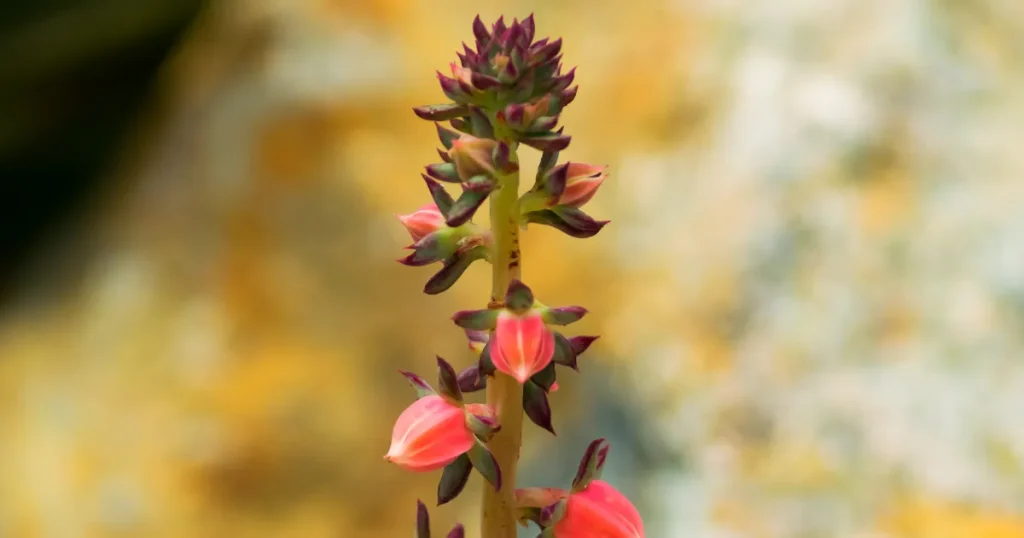
Appearance
- Foliage: Rosette up to 6 inches wide with triangular thick leaves. Mix of green, red, purple, orange, yellow, pink on leaves.
- Flowers: Bell-shaped pink blooms on tall arched stems appear in summer.
- Height: Rosette stays short, under 8 inches tall. Flower stalks add 12 inches in height.
- Colors: Vary from green to shades of red, purple, orange, yellow and pink depending on light exposure.
Growth Rate
Echeveria nodulosa ‘Painted Echeveria’ grows at a moderately fast rate, gaining several inches in diameter per year. Peak growth in spring and summer.
Light Needs
Echeveria nodulosa ‘Painted Echeveria’ thrives in full sun to partial shade. Provides more sun to develop the brightest foliage colors. Needs at least a few hours of direct sun daily.
Cold Hardiness
It can tolerate temperatures down to 25-50°F (-3.9 to 10°C). Best suited for USDA zones 9-11 but can briefly handle frosts in zone 8.
Care
Caring for Echeveria nodulosa ‘Painted Echeveria’ involves:
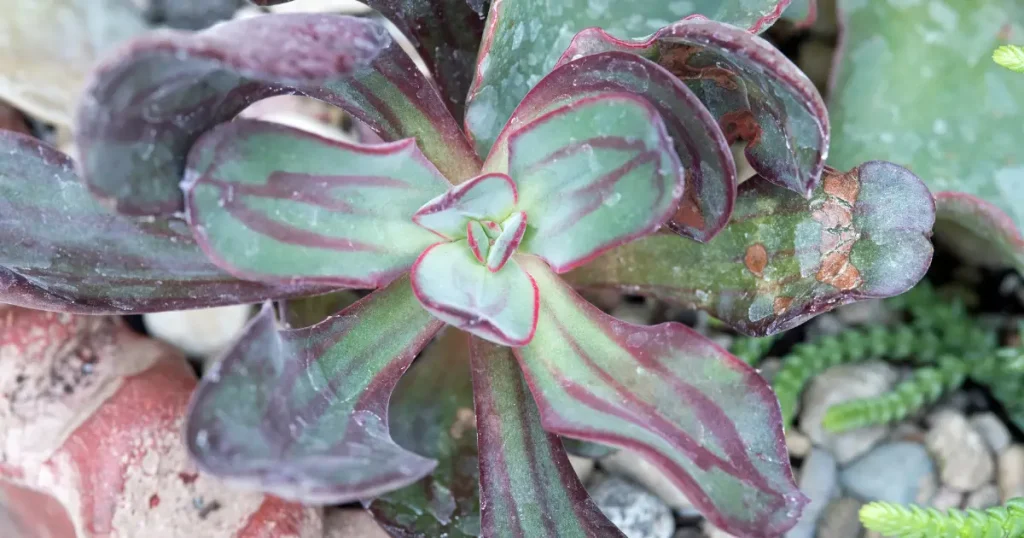
Water
Water Echeveria nodulosa ‘Painted Echeveria’ thoroughly only when soil is completely dry. Repeat after soil dries again. Approximately every 2-3 weeks in summer, less in other seasons. Don’t water on a fixed schedule though. Always wait for your succulents to show signs of dehydration before watering.
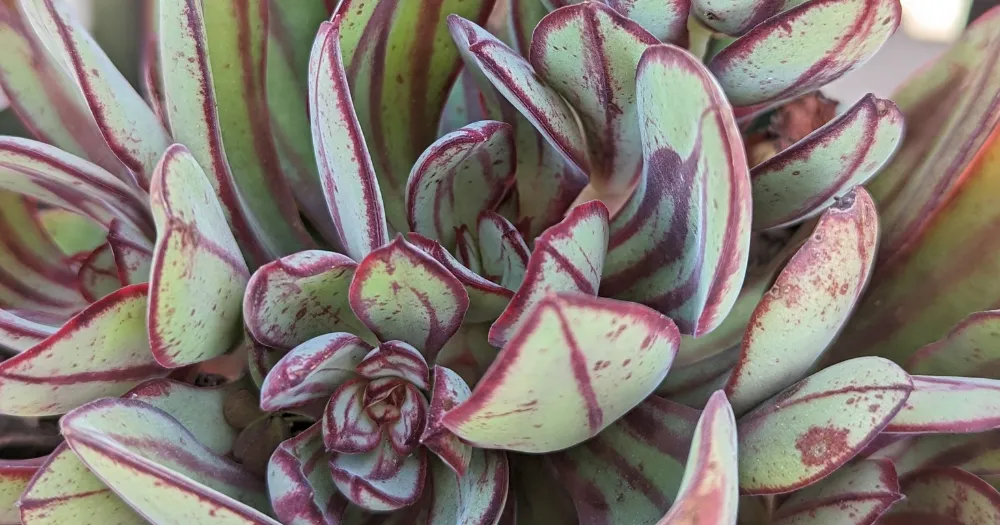
Temperature
Ideal temperatures for Echeveria nodulosa ‘Painted Echeveria’ are 60-75°F (15-24°C). Can briefly tolerate down to 25°F (-3.9°C) when hardened off properly.
Light
Rotate Echeveria nodulosa ‘Painted Echeveria’ periodically to evenly distribute color. Avoid hot afternoon sun which can scorch the leaves.
Soil
Use a fast-draining cactus/succulent soil. Add perlite or pumice to improve drainage.
Fertilizer
Fertilizing is optional – use a balanced water-soluble fertilizer at least at half strength during growing season if you want.
Repotting
Repot Echeveria nodulosa ‘Painted Echeveria’ in spring or early summer as needed, every 2-3 years.
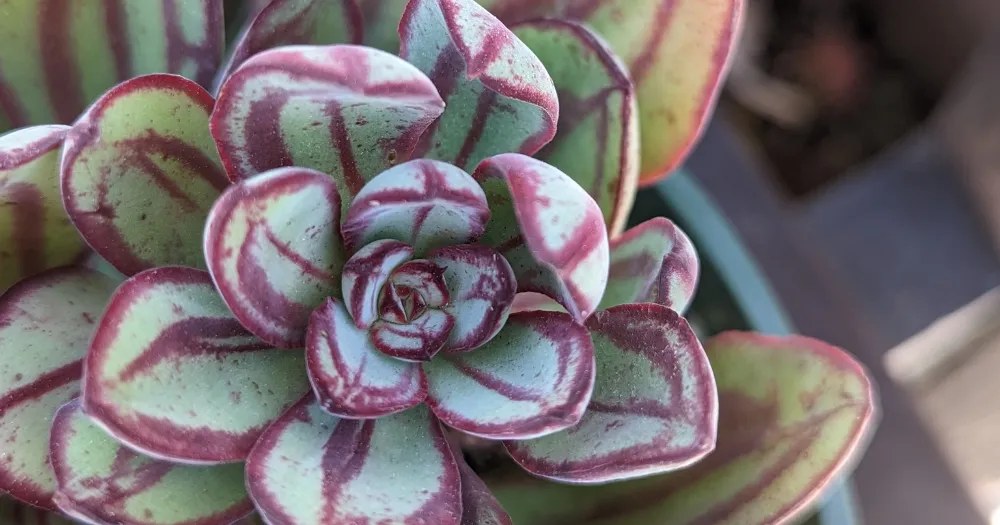
How to Propagate Echeveria nodulosa ‘Painted Echeveria’
Easily propagate Echeveria nodulosa ‘Painted Echeveria’ from leaf cuttings, offsets, or stem cuttings in spring and summer.
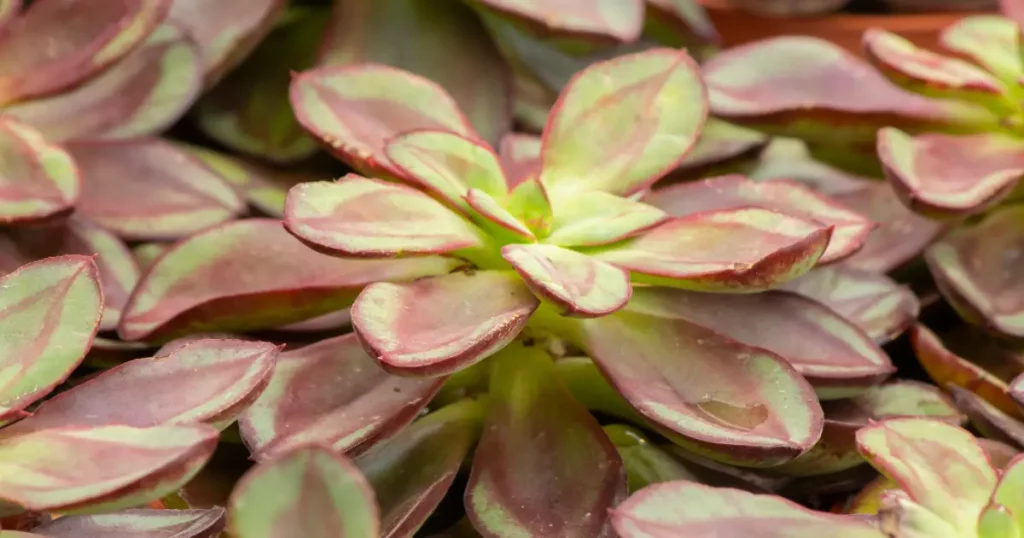
Pruning
Remove dead leaves and spent flower stems as needed to maintain the stunning appearance of Echeveria nodulosa ‘Painted Echeveria’.
Problems & Pests
Echeveria nodulosa ‘Painted Echeveria’ is relatively resistant to issues but may you might find:
- Mealybugs, aphids – Treat with insecticidal soap or neem oil.
- Root rot – Allow soil to dry out between waterings.
- Sunburn – Gradually acclimate to increased light levels.
Indoor Growth
Here are some tips for caring for Echeveria nodulosa ‘Painted Echeveria’ indoors:
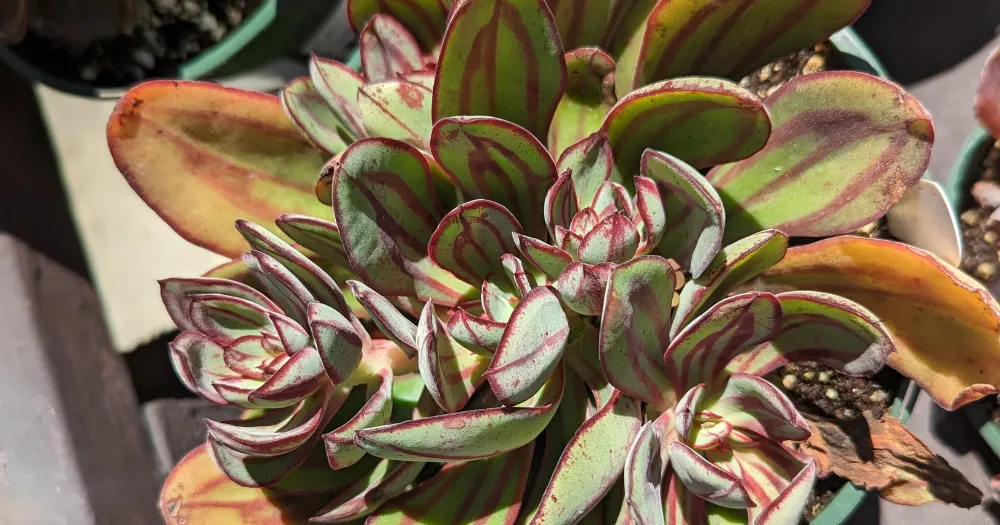
Light
- Place in a south or west facing window for the brightest light. Rotate occasionally for even color distribution.
- Supplement Echeveria nodulosa ‘Painted Echeveria’ with a grow light if unable to provide at least 4 hours of direct sunlight from a window.
- Avoid intense midday sun indoors as it can burn leaves through the glass. Use a sheer curtain to filter.
Water
- Allow soil to dry out completely between waterings, then soak thoroughly. This may be every 2-4 weeks indoors but always wait for your succulents to show signs of dehydration first.
- Reduce watering frequency in winter during dormancy period.
- Always drain excess water from the saucer/cachepot after watering to prevent soggy soil.
Temperature
- Ideal temperatures indoors are 65-75°F during the day and 50-55°F at night.
- Keep Echeveria nodulosa ‘Painted Echeveria’ away from hot and cold drafts from heating/cooling vents.
Humidity
- Average home humidity is fine. Higher humidity can lead to root rot if combined with overwatering.
Soil
- Use a fast draining cactus/succulent soil. Add extra perlite or pumice to improve drainage.
- Repot Echeveria nodulosa ‘Painted Echeveria’ every 2-3 years in spring to refresh the soil.
Fertilizer
- Use a balanced liquid fertilizer at 1/4 strength during growing season if desired.
- Avoid fertilizing in winter when dormant.
Provide these optimal growing conditions and your Painted Echeveria will stay healthy and colorful indoors!
Toxicity
Non-toxic to humans and pets. However, do not ingest leaves.
Dormancy
Echeveria nodulosa ‘Painted Echeveria’ enters a period of dormancy in the winter months when growth slows down. To care for it during dormancy:
- Reduce watering frequency, allowing the soil to dry out more between waterings. Only water every 3-4 weeks when the leaves start to wrinkle slightly. Avoid keeping the soil wet.
- Stop fertilizing completely during the winter dormant period. Fertilizer can encourage growth when the plant is meant to be resting.
- Provide cooler temperatures between 50-60°F. Avoid sudden temperature drops below 25°F.
- Give the plant a little less sunlight than peak growing seasons. Bright shade or a few hours of gentle morning/evening sun is sufficient.
- Monitor for pests while dormant. Mealybugs and aphids can affect resting plants. Check leaf undersides and remove any pests found.
- Don’t repot or propagate when dormant. Wait until spring when active growth resumes.
- Avoid pruning or damaging leaves and stems during dormancy. Hold off any shaping until spring.
- Check that the dormant plant isn’t sitting in wet soil which can lead to rot. Ensure drainage holes are clear.
With proper winter care, the Painted Echeveria will emerge from dormancy healthy and ready to resume active growth in the spring.
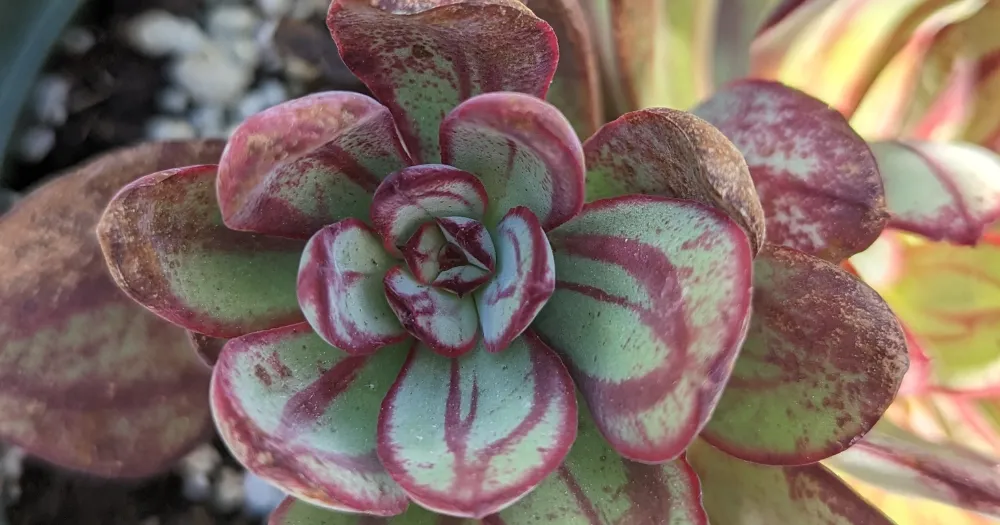
Etymology
Echeveria honors 18th century Mexican artist Atanasio Echeverría y Godoy. Nodulosa refers to the bumpy leaf texture.
With proper care, Echeveria nodulosa ‘Painted Echeveria’ provides vibrant, long-lasting color indoors or outdoors. This care guide covers how to keep your Painted Echeveria healthy and looking its best. The colorful foliage and easygoing nature make it a fun addition to any succulent collection.
Ready to add Echeveria nodulosa to your collection?
Click on the image below and purchase one from one of my favorite small businesses on Etsy! I’ve gotten some really neat looking cacti from this shop so be sure to browse!
